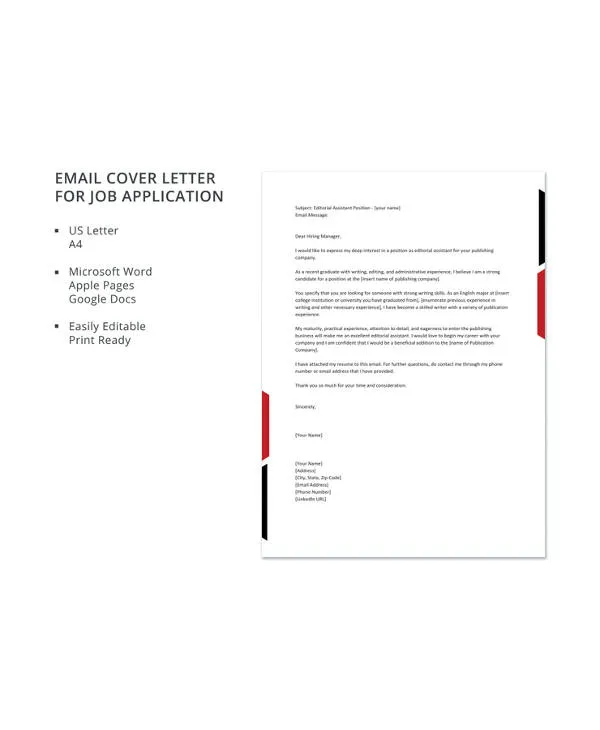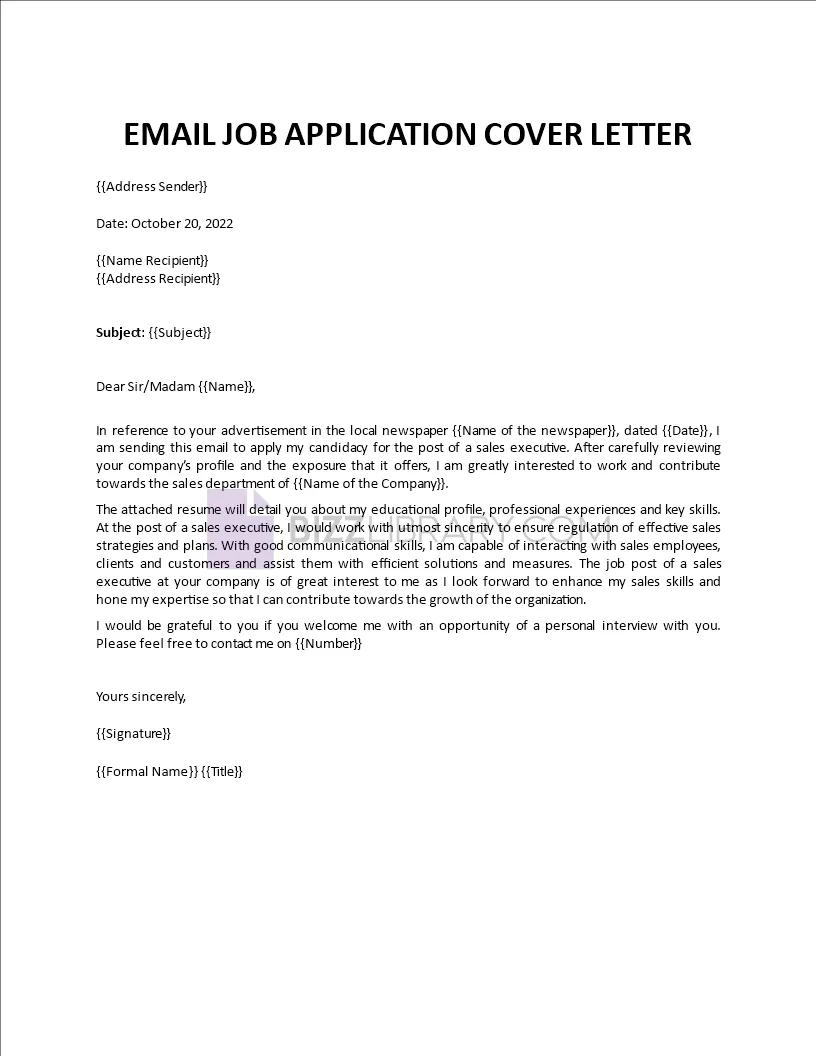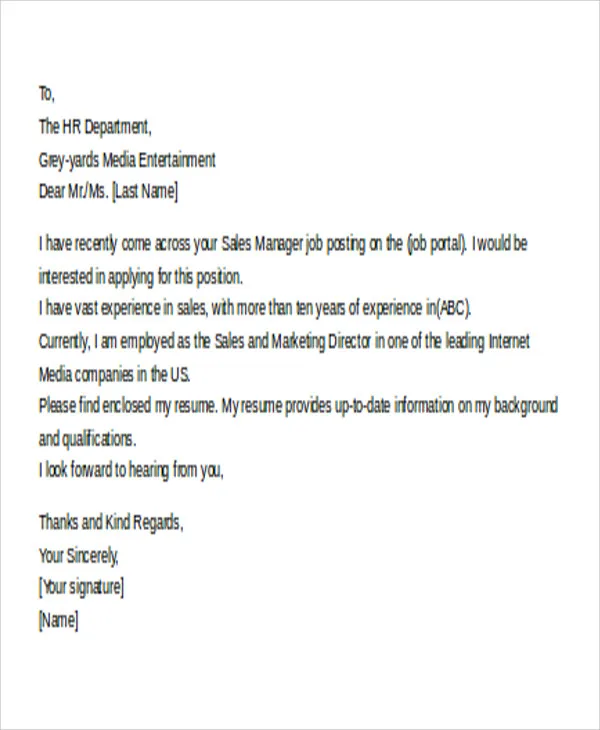Crafting a Job Apply Cover Letter Email Why It Matters
In the competitive world of job applications, your cover letter email is often your first impression. It’s your chance to grab a hiring manager’s attention and convince them to read your resume. Unlike a generic application, a well-crafted cover letter email is a personalized introduction, showcasing your enthusiasm and highlighting how your skills align with the job requirements. It’s not just about sending your resume; it’s about telling a story, demonstrating your understanding of the company and the role, and ultimately, securing an interview. A strong cover letter email can significantly increase your chances of standing out from the crowd and landing your dream job. It allows you to elaborate on experiences, explain career changes, and convey personality, things that a resume alone often cannot do. Therefore, investing time in perfecting this email is an investment in your career future, making it a crucial element of your job application strategy.
Formatting Your Job Apply Cover Letter Email
Formatting your cover letter email is just as crucial as the content. Start with a professional font like Arial or Times New Roman, and keep the font size between 10 and 12 points for readability. Use clear and concise paragraphs, with ample white space between them to avoid overwhelming the reader. Avoid using complex formatting; your goal is to present information in a clean, easy-to-digest manner. Ensure your email is well-structured with a clear subject line, a professional greeting, and a defined closing. Use bullet points sparingly to highlight key achievements or skills, but don’t overdo it. The overall formatting should be clean, professional, and reflective of your attention to detail. This demonstrates your respect for the recipient’s time and your commitment to professionalism, setting a positive tone from the outset of the email.
Subject Line Make It Count

Your subject line is the first thing a hiring manager sees, and it determines whether your email gets opened. Keep it clear, concise, and relevant. Use the job title and your name (e.g., “Software Engineer Application – John Doe”) to make it easy for the recipient to identify the email’s purpose. Avoid generic subject lines like “Job Application.” Consider including the job reference number if provided, to help the recruiter quickly match your application to the correct position. A compelling subject line increases the likelihood of your email being opened and read, setting a positive tone for your application. This small but critical detail can greatly influence the initial impression and increase your chances of your application moving forward.
Greeting Set the Tone
The greeting sets the tone for your entire email. Start with a professional salutation like “Dear Mr./Ms./Mx. [Last Name],” if you know the hiring manager’s name. Researching the name is a good start before applying. If you are unsure of the name, use a general greeting like “Dear Hiring Manager.” Avoid informal greetings like “Hi” or “Hello.” Ensure the greeting is followed by a comma. The greeting should be respectful and show that you’ve taken the time to personalize your email. This simple step demonstrates your attention to detail and professionalism, making a positive impression from the start. A well-chosen greeting indicates respect and sets the stage for a positive and professional communication exchange.
Highlighting Your Skills and Experience
The body of your email is where you highlight your relevant skills and experience. Tailor your content to match the job description, emphasizing the skills and experiences that align with the role. Briefly mention how your background makes you a strong fit for the position. Rather than simply restating your resume, provide context and elaborate on your accomplishments, quantifying your achievements whenever possible (e.g., “Increased sales by 15% in Q2”). Show, don’t just tell; provide concrete examples that demonstrate your ability to perform the job effectively. This helps the hiring manager quickly understand your value and how you can contribute to the company’s success. The goal is to make it easy for the recruiter to see how you meet the job requirements.
Showcasing Your Achievements

Showcasing your achievements is crucial. Focus on quantifiable results and use action verbs to describe your accomplishments. For each achievement, follow the STAR method (Situation, Task, Action, Result) to provide a clear and concise explanation. Briefly describe the situation, the task you undertook, the actions you took, and the measurable results of your efforts. For example, instead of saying “Managed projects,” you could say “Managed three concurrent projects, delivering them on time and under budget, resulting in a 10% increase in client satisfaction.” By providing specific examples and quantifiable results, you demonstrate your value and make a compelling case for why you should be considered for the job. This approach turns your accomplishments into tangible evidence of your capabilities.
Expressing Enthusiasm and Fit
Expressing your enthusiasm for the role and the company is essential. Show that you’ve done your research and that you genuinely want to work there. Explain why you’re interested in this specific opportunity and what excites you about the company’s mission, values, or culture. Mention how your skills and experience align with the company’s needs and goals. Demonstrating your understanding of the company’s work and how your contributions would fit in shows initiative and a genuine interest. This helps you stand out from other candidates by showing that you’re not just looking for any job, but a specific opportunity. Your genuine enthusiasm and passion can significantly influence the hiring manager’s perception of your candidacy.
Closing Your Cover Letter Email
Your closing should be professional and polite. Thank the hiring manager for their time and consideration. Express your interest in hearing back from them soon, and state your availability for an interview. Use a formal closing such as “Sincerely,” “Best regards,” or “Thank you.” Always include your full name, phone number, and email address in your signature. Proofread your email carefully before sending it to ensure there are no errors. A well-crafted closing leaves a lasting positive impression, re-emphasizing your interest and making it easy for the hiring manager to contact you. The closing should be as polished and professional as the rest of the email.
Proofreading Essential Step

Proofreading is a non-negotiable step in the job application process. Before you send your email, carefully review it for any grammatical errors, spelling mistakes, or typos. Use a grammar checker, but also read the email aloud to catch any awkward phrasing or unclear sentences. Check that your name, contact information, and the company name are spelled correctly. Ensure your email is free of any errors as this reflects your attention to detail and professionalism. A poorly written email can damage your chances, regardless of how qualified you are. Always take the time to proofread meticulously to ensure your application presents you in the best possible light.
Following Up What to Do Next
After sending your cover letter email, follow up appropriately. If the job posting specifies a timeframe for responses, respect it. If not, send a polite follow-up email within a week or two to reiterate your interest. Keep your follow-up brief and to the point, referencing the original job application and highlighting your enthusiasm once more. If you’ve connected with a recruiter or hiring manager on LinkedIn, you may also use that platform to send a message. Avoid being overly persistent, as this can be counterproductive. A well-timed and polite follow-up shows that you are proactive and genuinely interested in the opportunity, increasing your chances of getting a response.
